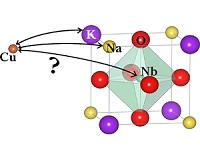| . |  |
. |
Geneva (AFP) Nov 28, 2010 Over 100 states will gather Monday to take stock of a mine ban treaty that has led to massive progress in eradicating the weapons in many parts of the world, but foot-dragging from some signatories. Myanmar meanwhile remains the only nation still laying landmines, as international pressure on the issue increases. The mine ban treaty, which entered into force in 1999, has now been ratified by 156 state parties. Besides a ban on landmine usage, it requires state parties to clear their territories of mines within 10 years of joining. In addition, it requires stockpiled mines to be destroyed within four years. Four countries that have not met the deadline for destroying their mine stockpiles -- Ukraine, Belarus, Greece and Turkey -- will be asked to explain why, Kerry Brinkert, director of the secretariat of the convention told AFP. Venezuela meanwhile will also come under scrutiny. According to the International Campaign to Ban Landmines (ICBL), it is the only signatory that has not started digging up its buried mines, and the campaign will be seeking a "clear declaration" from Caracas on the issue. In Geneva, diplomats will also try to negotiate on requests from Colombia, Denmark, Guinea Bissau, Mauritania, Chad and Zimbabwe to extend their deadlines for mine clearing. "The states can vote if there is an impasse, but until now, it has been collegiality" that has prevailed, said Brinkert. It is not however the first time that the convention has had to consider applications for the extension of such deadlines. Over five days, participants will also discuss progress made by states that have signed up to the Cartagena plan of action, adopted in 2009, which includes measures to enforce the application of the treaty, said Brinkert. It also has provisions for trying to get more countries on board, which Brinkert said was that one of the main challenges of the meeting, as many of the major world powers are among those countries that have not yet signed up, including China, India, Pakistan, South Korea, Russia and the United States. Together, these six countries "may hold tens of millions of stockpiled anti-personnel mines," said the convention's secretariat. The United States however is one of five biggest financers of mine clearing activities in the world along with the European Union, Germany, Japan and Norway. And Washington will be represented at Geneva as an observer state, with Steve Costner of the US State Department's arms reduction office leading the delegation, said Brinkert. "It is very positive that for the second time, the United States has decided to participate," he added. Myanmar meanwhile is now the only government in the world still laying landmines, after Russia stopped planting such weapons, ICBL said. Landmines and explosive remnants of war caused 3,956 new casualties in 2009, although this is the lowest annual total since the ICBL began monitoring the issue in 1999 -- and 28 percent lower than in 2008. Only three countries are still actively making mines -- India, Myanmar and Pakistan. Nepal has stopped producing. However, non-state armed groups in six countries -- Afghanistan, Colombia, India, Myanmar, Pakistan and Yemen, are continuing to lay the deadly weapons. Swiss Foreign Minister Micheline Calmy-Rey, her Albanian counterpart Edmond Haxhinasto and president of the International Committe of the Red Cross Jakob Kellenberger will open the meeting, which will be attended by 700 delegates.
Share This Article With Planet Earth
Related Links Our Polluted World and Cleaning It Up
 On The Way To Lead-Free Technology
On The Way To Lead-Free TechnologyBonn, Germany (SPX) Nov 24, 2010 The change-over to lead-free products is in full progress. The problem is however that the environmentally friendly alternatives have to be as effi cient as the lead-containing variants. One example is the injection system of diesel engines. Lead-free functional materials can be found faster by means of computer simulation methods. Technical progress in the automobile industry is unbroken. ... read more |
|
| The content herein, unless otherwise known to be public domain, are Copyright 1995-2010 - SpaceDaily. AFP and UPI Wire Stories are copyright Agence France-Presse and United Press International. ESA Portal Reports are copyright European Space Agency. All NASA sourced material is public domain. Additional copyrights may apply in whole or part to other bona fide parties. Advertising does not imply endorsement,agreement or approval of any opinions, statements or information provided by SpaceDaily on any Web page published or hosted by SpaceDaily. Privacy Statement |